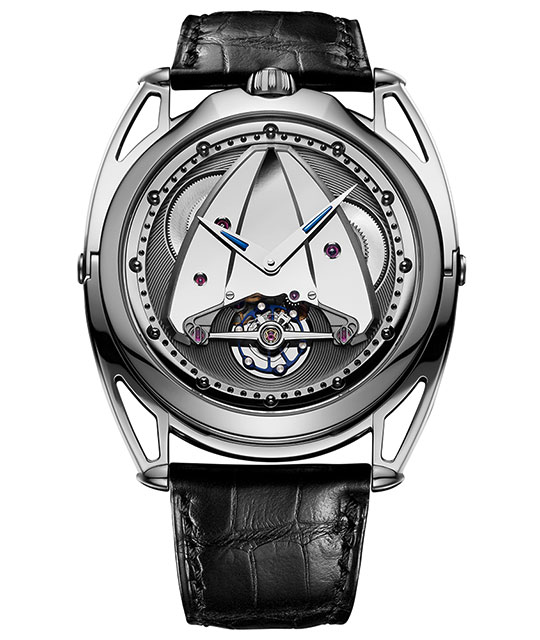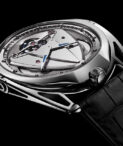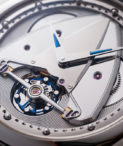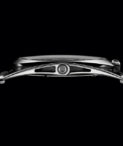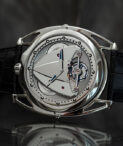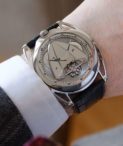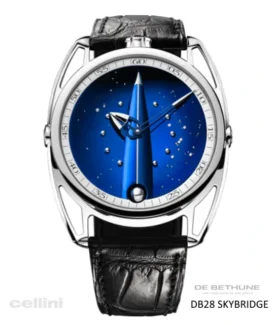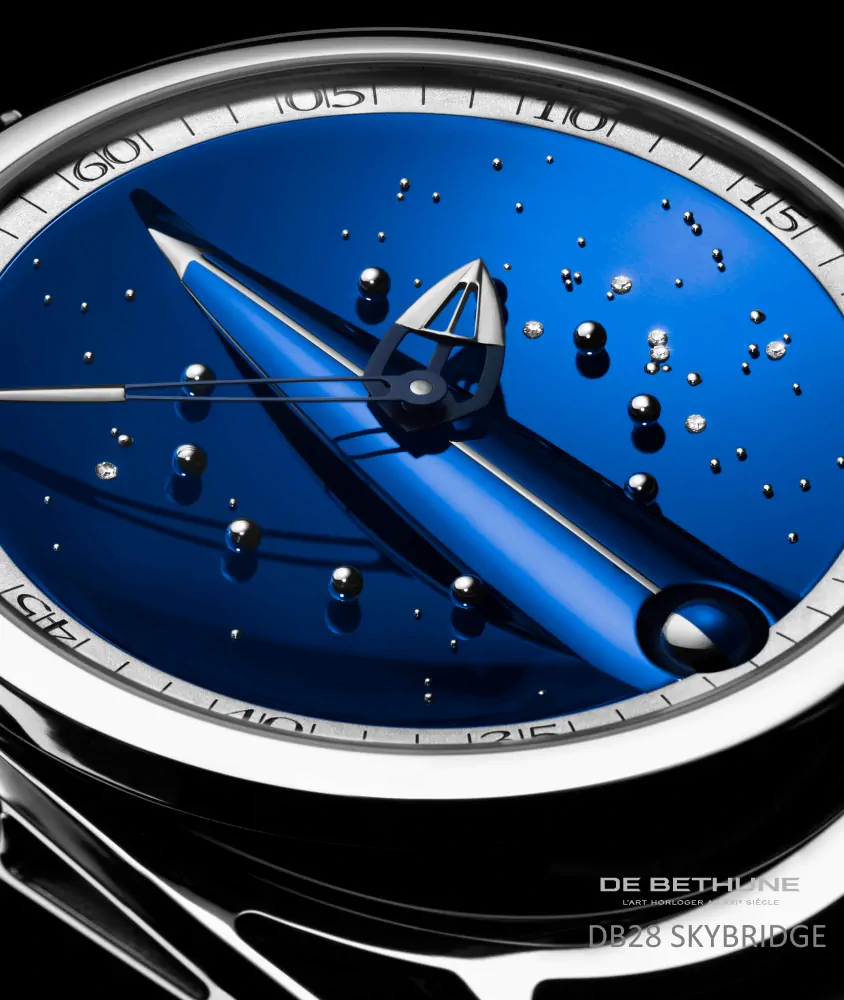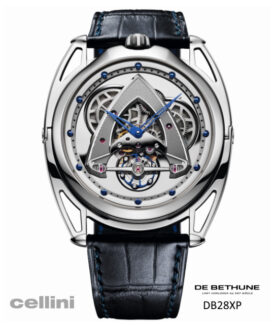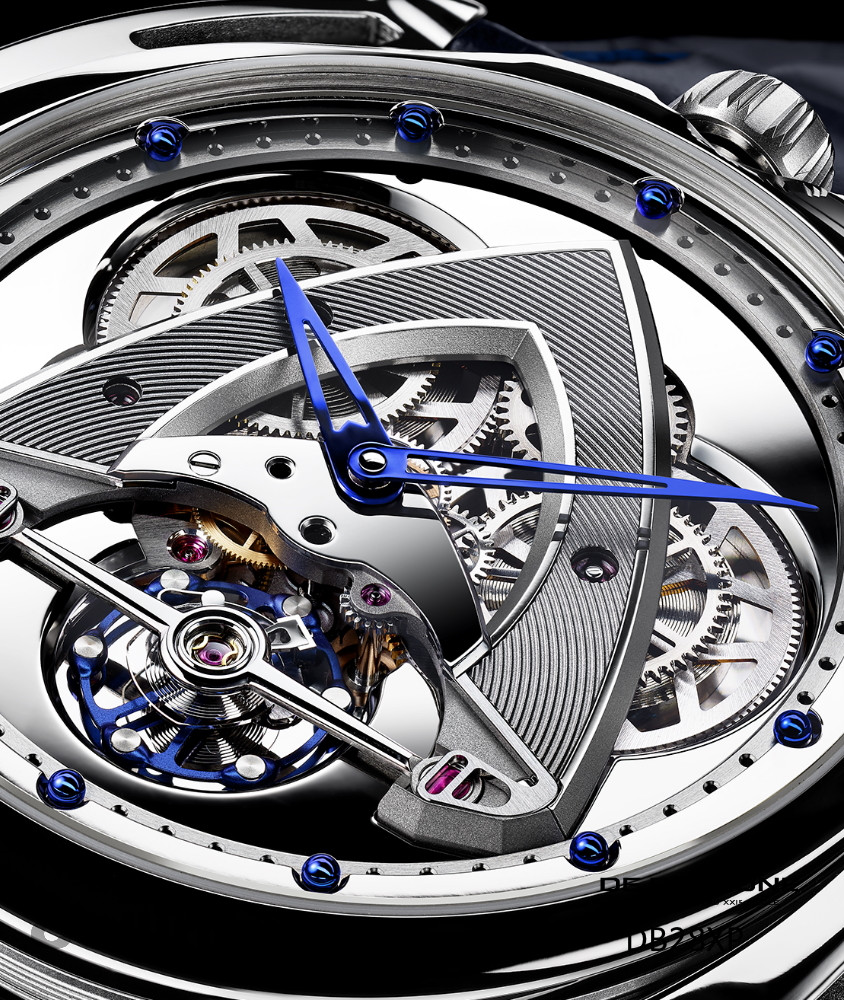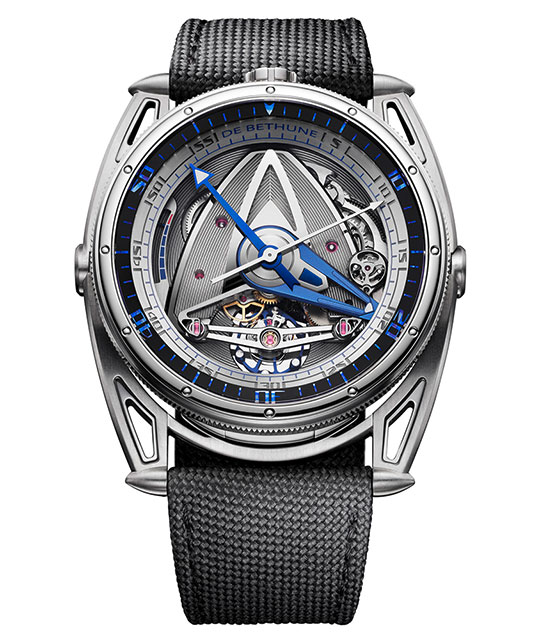DB28XP
Reference# DB28XPTIS1- Details
- Description
Availability: see it at 430 Park Avenue
- Case: titanium
- Size: 43 mm x 7.2 mm
- Movement: hand-wound manufacture caliber DB2115v6
- Power Reserve: approximately six days
- Water Resistance: 30m
- Dial: openworked, spherical hour markers
- Caseback: solid, engraved
- Hands: polished titanium with blued titanium inserts
- Strap/Bracelet: hand-stitched alligator leather
- Factory Warranty: two years
Monochromatic by design, the ultra-thin titanium DB28XP is first and foremost a reference to the very first DB28.
A multitude of different shapes – hemispherical, concave, spherical, a sequence of Microlight, satin, polished and blocked finishes… The delta-shaped main plate – a De Bethune hallmark – is finished to perfectly reflect ambient light. The metal surface is patiently polished until it becomes a true mirror, a process that takes up to three hours.
For telling time, no contrasting indexes, but little spheres polished like small satellites. They orbit a larger body, planet Earth, in the spirit of the solar system. A tone-on-tone pattern surrounds the central part of the elliptical dial, subtly revealing the movement’s wheels. Finally, as a discreet De Bethune signature, the blued titanium inserts in the hands at the center.
The hand-wound movement features De Bethune’s balance wheel, visible through the dial thanks to an opening at 6 o’clock.
Then there is balance spring. At De Bethune, this minute, extremely fine spring, considered to be the soul of the mechanical watch, maintains its true center of gravity with a flat terminal curve affixed to the outside of the balance-spring. Differences in the thickness of the blade add to the almost perfect precision of its concentric development. Among the many advantages: lower height, better adjustment of concentricity, finer adjustment of the racquet, no need for pins. The curve’s shape even acts as a shock absorber in case of impact. Finally, the material’s internal structure remains intact since it has been neither stressed nor bent. De Bethune has succeeded in increasing the power reserve by 20 percent, bringing it to a total of six days.
Equally visible is the exclusive triple shock absorption system. De Bethune designed a bridge held on both sides, symmetrically, to ensure the balance is kept perfectly in position. The Maison also added two shock absorbers at each end to supplement the shock absorber of the pendulum itself. Hence the name “triple pare-chute” or triple shock absorber, which effectively absorbs and dampens violent shocks with springs instead of screws mounted on perfectly polished axes.

